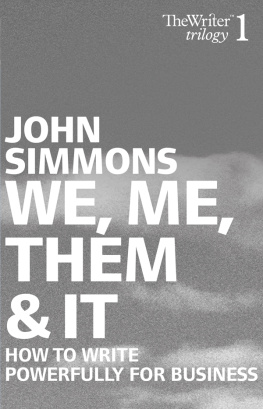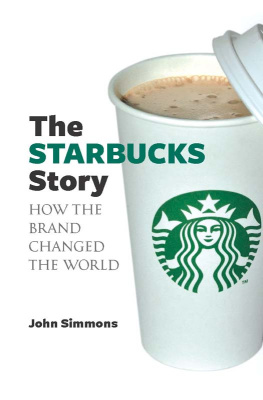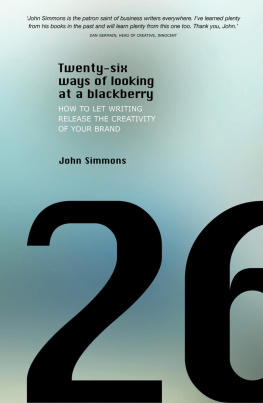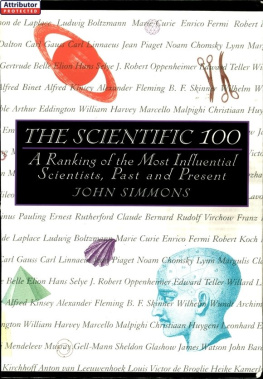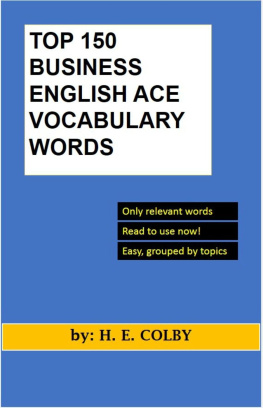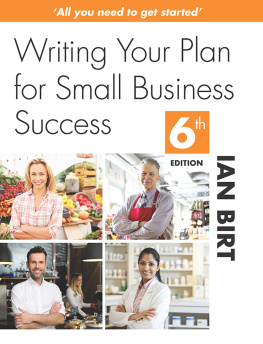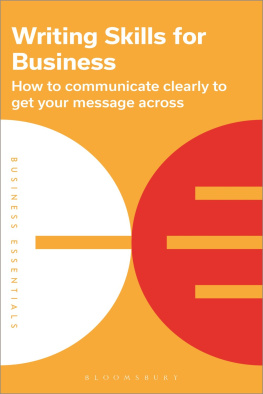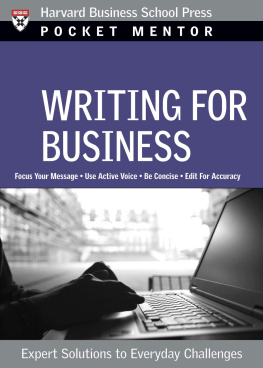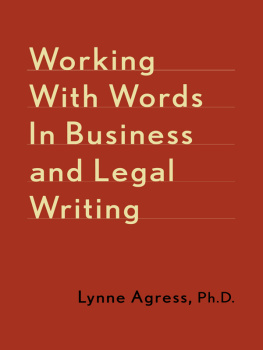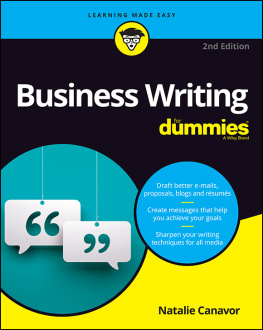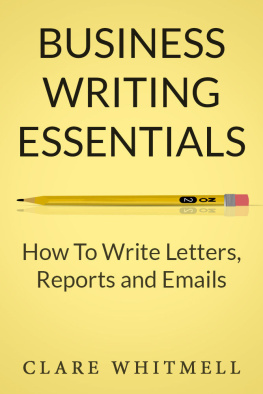We, me, them & it
How to write powerfully for business
John Simmons

For Linda, Matthew and Jessie
who make me one of us
not one of them
2006 John Simmons
First published in 2006 by:
Marshall Cavendish Business
An imprint of Marshall Cavendish International (Asia) Private Limited
A member of Times Publishing Limited
Times Centre, 1 New Industrial Road
Singapore 536196
T: +65 6213 9300
F: +65 6285 4871
E: te@sg.marshallcavendish.com
Online bookstore: www.marshallcavendish.com/genref
and
Cyan Communications Limited
119 Wardour Street
London W1F 0UW
United Kingdom
T: +44 (0)20 7565 6120
E: sales@cyanbooks.com
www.cyanbooks.com
The right of John Simmons to be identified as the author of this work has been asserted by him in accordance with the Copyright, Designs and Patents Act 1988.
All rights reserved
No part of this publication may be reproduced, stored in a retrieval system or transmitted, in any form or by any means, electronic, mechanical, photocopying, recording or otherwise, without the prior written permission of the rights holders, application for which must be made to the publisher.
National Library Board Singapore Cataloguing in Publication Data
Simmons, John, 1948
We, me, them & it: how to write powerfully for business / John Simmons. Singapore: Marshall Cavendish Business, c2006.
p. cm.
Includes index.
eISBN: 978 981 438 295 3
1. Business communication. I. Title.
HF5718
658.45 -- dc21 SLS2005055159
ISBN-13 978 981 261 841 2 (Asia & NZ)
ISBN-10 981 261 841 4 (Asia & NZ)
ISBN 1-904879-68-3 (Rest of world)
Printed and bound in Singapore
Contents
Preface to the new edition
Time changes things. It allows you to read your own words as if they were written by someone else. And that is not a bad experience, particularly when the book is about tone of voice.
I originally wrote this book in 2000. It drew on my work over the previous decade and more. It was reassuring, therefore, when a new edition was suggested, to read it through and discover that I did not want to disown it. Time had been kind. Indeed, I felt that the case that I had made for tone of voice in We, Me, Them & It had now become accepted. Subsequent books The Invisible Grail and Dark Angels had reinforced the arguments but in this book I had made the original case that tone of voice matters.
It is about words, of course. Individual words and the way you put them together to speak and write distinctively. It can start with a single word that sets the tone: Hello or Hi or OK?, for example. Or even Hwaet! as the Beowulf poet said, the first word of one of the earliest pieces of writing in what we now call English. I had been reading Seamus Heaneys version of Beowulf when writing this book originally. His version of Hwaet! was So. But in different centuries or different contexts we might say Hark, Hey, Oi! or Listen, I want to tell you a story.
When we tell a story and brands increasingly recognise that this is what they have to do we have to make a fundamental decision. What is the tone of voice of the storyteller, the brand? If you dont decide, theres no doubt that your readers or listeners will be drawing their own conclusions. Because your words, and the way you say them, send signals. The signals announce you as bored, bureaucratic or rude if youre doing a really bad job with your words. Or, perhaps, if youve made the effort to align your tone of voice with the values of your brand, you come across as well, you fill in your own brands values. Anyone for passionate?
This book is really about storytelling, and about how organisations, businesses and brands can tell their stories better. But, of course, organisations do not tell stories, people do. So, particularly through the Me chapter of this book, I encourage people to express their own personalities in their writing at work. They can only do that if their organisations also have the confidence to encourage it.
It seems to me that this argument is now a little easier to make. I receive fewer blank stares nowadays. Organisations and businesses of all kinds know that they have to operate as brands, and that means having consistent values and personalities. These need to be expressed through a consistent tone of voice too. While I was writing this Preface I received an email from a client I had worked with ten years earlier. His email said: One of my roles here has been the development of a new brand identity, which has led inevitably to establishing a tone of voice in all our communications. I replied that it had not seemed inevitable ten years earlier.
As with other branding disciplines, tone of voice can be abused as well as used. Innocent Drinks got it right and I wrote about them in The Invisible Grail. Innocent have built their brand personality through verbal rather than visual communication. Why? Largely because its cheaper. Every brand uses words. Very few brands use words well. Yet the investment needed to improve verbal communication is small compared to investment in visual identity.
Words can do so much more too, if we allow them. If we really believe that the brand should be the central organising principle of a company, product or organisation, we have to start with the words used to describe the brand. Branding should be all about differentiation yet time and time again we see brands defined through visions, missions and values, through umpteen varieties of brand models with the same tired old words. (Guilty.) Which brings me back to my complaint about passion, although there are many other words vying for a place in this brand clich list. Be honest, if you say your brand is about passion, how can you allow it to use language that is so dull?
This is not just for consumer brands. Business to business companies Air Products who are featured as a case study in this book are one example are now using consumer techniques, including tone of voice, to appeal to customers.
The answer starts with a more rigorous attention to brand ideas, and the definitions of those ideas. As Apple says Think different. Part of thinking different for Apple is to appeal directly to computer users rather than just to IT purchasing departments. The basis of the tone of voice process is a determination to use words that really mean something and that take a risk. Successful brands need great ideas that drive them. But they also need those ideas to be articulated with words that inspire.
Inspiring words are not necessarily the lofty words of a bard. No Hwaet! for a modern brand. Words inspire because they make an emotional connection. The concept of the third place drives Starbucks worldwide growth, underpinning the brand. The words inspire different local interpretations of a consistent experience. Guinnesss idea of inner strength is a simple verbal explanation used to describe the brands behaviour throughout history as well as to inform current advertising. These ideas, of course, also shape the brands tone of voice.
Big corporations naturally find it harder to define a tone of voice that is truly distinctive. These brands come with a lot of baggage attached and, usually, a culture that is risk-averse. Corporations recognise the power of words because they realise words can be dangerous. If youre not honest and true to your brand, there will be a gap between your brands real and proclaimed personality and words will point out the gap. We now know better than to trust a friendly, smiling Enron with integrity as one of its values.

